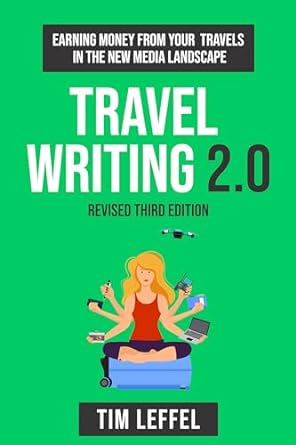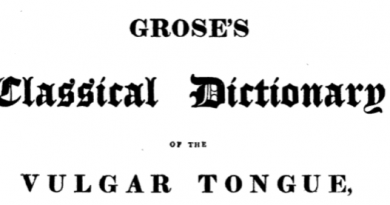BOOK REVIEW : Travel Writing 2.0 (Third Edition) by Tim Leffel
This is another in my occasional series of book review posts and they might be appearing here more as I’ve just realised you can’t leave reviews on Amazon unless you spend £30 per year on other products. I admire their attempts to make reviews genuine, but it feels a little sub-optimal as I rarely buy anything from Amazon. Anyway, this book is by the travel writer Tim Leffel and I’ve followed him via his newsletters for some years. This is a slightly elongated version of the review that I would have posted on Amazon if I had met their new requirements.
The present book aside, the best title that I’ve read on travel writing over recent years has been How to be a Travel Writer by Don George. That book perhaps needs a new version in a similar way to this update from Leffel given the ever shifting sands of the topic. The nature of travel writing has changed over recent years, but there are sections in this book on both traditional earnings as a travel writer and digital opportunities for a travel writer. Leffel notes that “the rise of one type of media does not mean the automatic fall of another” and I think that’s a solid way of thinking.
Travel writing books many years ago would focus on writing articles for magazines and newspapers, as well as how to write guidebooks. Writing guidebooks is a challenging and time-consuming occupation and the comment that “you barely have time to write full sentences before moving on to the requisite restaurant listings and museum hours” is evident from any Lonely Planet or Rough Guide book. Leffel’s comment that many young travellers use their phone to source material and don’t go near guidebooks seems accurate as I can’t recall the last time I saw anyone in Europe or the United States under the age of around 40 looking at them. The market will continue to evolve, certainly the way in which travellers source their curated information on an area.
The key element here, which I think is standard advice from all travel writers I’ve noted over the years, is to have a diverse portfolio of different income streams. Without that there will be inevitable highs and lows which make cash flow planning nigh on impossible without another way of earning money. The book is a useful exercise for those who are wondering what potential there is from entering the travel writing market, but the positive element is that there are low barriers to entry for anyone who wants to.
In terms of writing style, the author stresses the importance of always being curious, noting:
“If you are a closed-minded, dogmatic person who only gets news from one source, doesn’t have a passport, and never reads quality fiction, you are going to be a lousy travel writer.”
I don’t claim to be a travel writer, although I have done some of it in numerous different ways over the years, but I’d agree that poor writing is often apparent. The author writes that some skills are innate and some are learned, but travel writing is certainly something that needs curiosity, practice and a lot of reading. Finding a tone of voice is inevitably important and Leffel preaches the need “to be authentic” in writing.
All authors should perhaps consider getting their own blog, but this book suggests that it isn’t for everyone and it does potentially take up a lot of time. For some writers, the time and energy won’t be justified, but for others it is a useful marketing tool. I started this blog to primarily remember where I’d been, which I accept isn’t necessarily the inspirational back story some might like, but between my two loyal readers and myself I’ve been able to get numerous paid projects because of it. The pros and cons of having a blog are examined by Leffel, it’s certainly something to consider.
There’s also practical advice relating to search engine optimisation, social media and networking. There’s also advice on things to definitely not do if new to the trade, alongside the importance of having a good work ethic. Most importantly, Leffel notes that it’s important to develop a thick skin for the inevitable rejections that will come. The advice on travelling in a frugal manner is also wise, I’ve managed to do that for years and I’ve always thought that this makes travel more authentic rather than taking away from the experience. When British Airways paid for me to travel in First and Club World I always had very different stories to tell than when in World Traveller, with most of my interactions during my five weeks in the United States last year being on public transport. There’s nearly always an angle, but the engagement with others plays a big part in telling any story.
The author addresses very early on in the book the matter of income potential. Realism is important here, as most travel writers don’t earn that much from their profession, although there are some who do very well indeed. But, this is partly because some are hobbyists or just writing part-time, writing because they enjoy travelling and find that it makes their trips more affordable. For those who want to get into travel writing, this is certainly a good first book to read, particularly in conjunction with Don George’s book.
You can buy the book by clicking on the Amazon image at the top of this post or directly at https://travelwriting2.com/get-the-book/.



